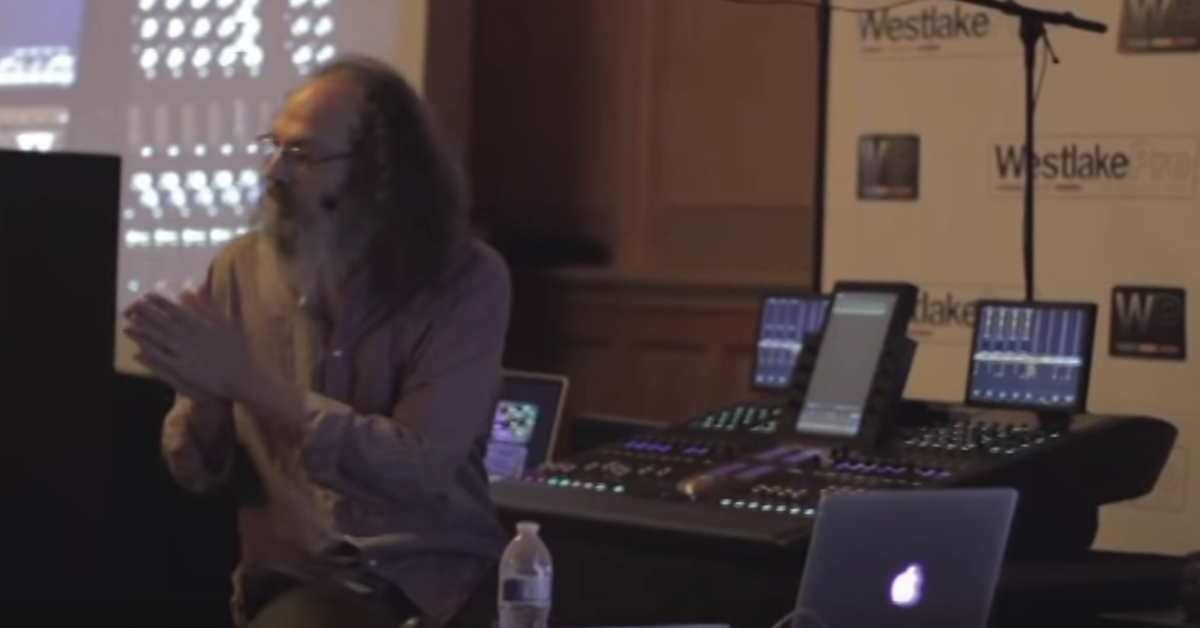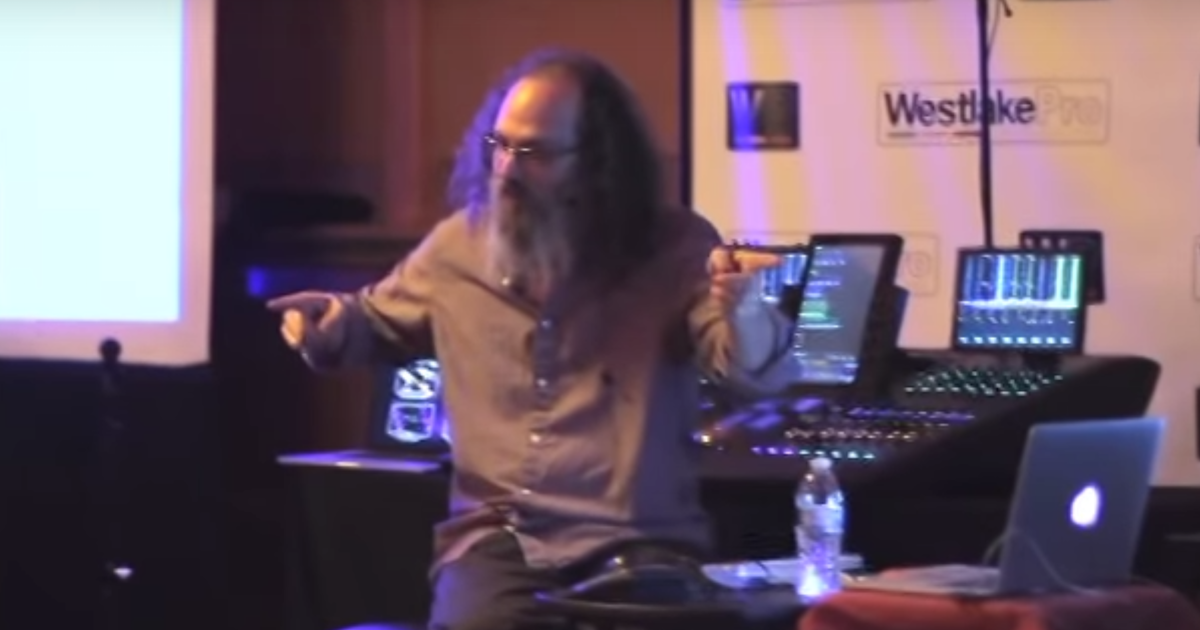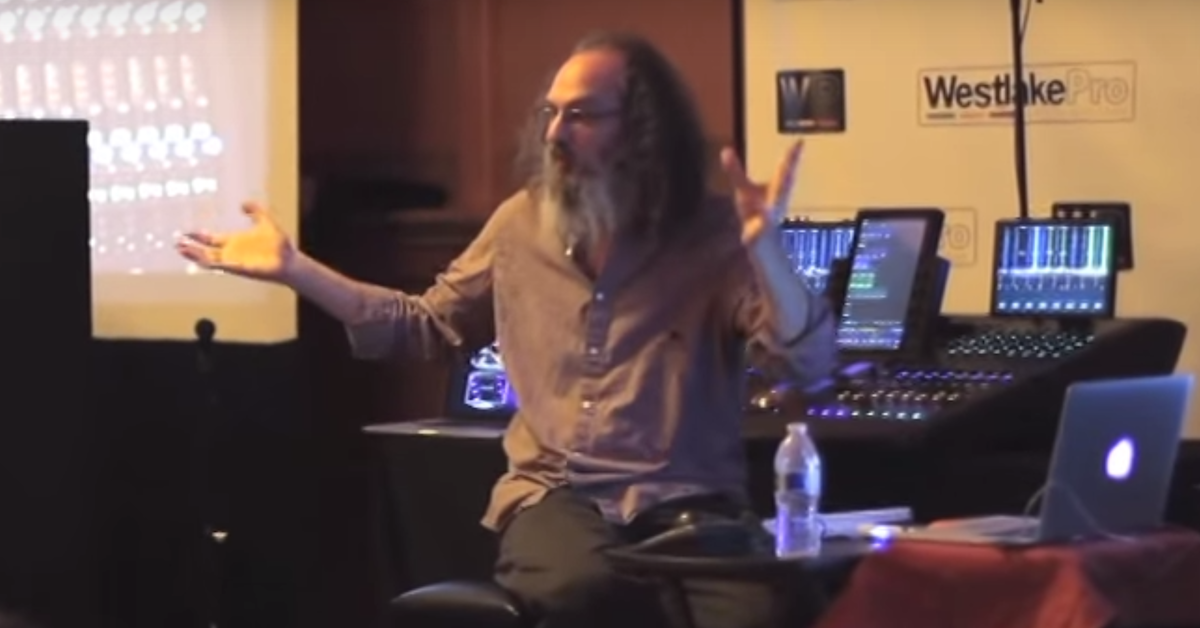Mixing Masterclass with Andrew Scheps — Part 12
I do, yeah. Yeah. I do.
And if you go back and look at — you know, there are a couple of interviews of when I’m still mixing on the console, and I loved having lots of faders in front of me, and the S6 actually solves a lot of these problems, things like VCA spills.
So you don’t have to order your session a certain way, and you know what is on your faders very quickly. I love that, but at the moment, I just have a one fader controller.
At the moment, unless they let me take this one home, I’ve got a Frontier Designs — what’s it called, the one… The FaderPort? Yeah, the FaderPort. Alpha Track.
And at first, it was a real drag, and I thought, “Well, I need to grab lots of faders at once,” because that was the whole deal with my console, my lead vocal was here, my background vocals were here, and then my group faders started here with drums, bass, guitars, maybe second guitars, and maybe keyboards, whatever.
I could grab the whole song, and I’d be mixing, and when I started doing it with one fader, I actually went back to a mix on the console, and I tried some stuff, and I realized, I was only ever mixing one fader at a time, I was just getting distracted and changing which fader I was mixing, and I would look at the faders after a pass of automation, like the drums would be going nuts, really getting all of the fills, and then all of a sudden the bass starts moving, and then the drums just sit there for eight bars, and then the drums start moving again, and the vocal is just sitting there.
So it actually became okay for me to focus on one thing at a time to do the automation, because by the time the automation comes on for me, it’s already really, really late in the day, and I already know every single thing I’m going to automate. It’s a list in my head that two days afterwards I wouldn’t remember a single thing, but I know exactly where every drum fill is, where every guitar push is, how I’m going to push to the chorus, and I just go through and I do them and that’s it.
So that’s easy to do one fader at a time, and usually drums, hit play all the way through the song. Bass, hit play, all the way through the song. Then lead vocal, and lead vocal is the only thing I’ll go back and fix rides on if the guitar has overtaken it and stuff like that, but all of the rest of it, you already know what you need to do, so doing it one more time is a little mechanical and a little less fun maybe, but I’m probably a lot more thorough now than I used to be.
Because you can see that flat-line in the automation, and I’m like, “Alright, that’s when I was thinking about what I was going to have for lunch,” which happens.
I work at whatever sample rate the stuff comes in at for the reasons I said before. I’m not a fan of going through a bunch of converters to come right back into the box. I think it sounds way better to just stay in the box.
That said, when I’m tracking, I always track at 96kHz. I — there are people I respect greatly who are sitting in the front row whose fully in on 192. I haven’t been lucky enough, I guess, to work in situations — like, when I go track, it’s not always my own rig, and older TDM rigs are not fairly stable at 192 with lots of tracks, and it’s difficult, and especially pre-Pro Tools 10 with the Disc Caching.
So generally, I work at 96. I think 44.1, 16-bit for a stereo mix is generally pretty good, but you can do much better than that.
Right, but what I’m saying is to find someone to make the record sound the way you want, you need to find somebody who has already made a record sound the way you like, and that’s really the only way to do it. You need to go through kind of current big bang catalogs, and say, “Oh, that one sounds awesome to me,” and then just see who worked on it, and then see if they’re available, or if they do — if they’re still mixing.
It’s tough. Like, here’s something that for me was an absolute revelation. I did a two day seminar that Al Schmitt was teaching at Capitol recording and mixing a big band, and he said “I do not use EQ and I do not use compression,” and you think, “well, okay, that has to be an exaggeration,” and then you go and watch him do it, and he does not use EQ, and he does not use compression.
When he mixes, there is one compressor on the mix and one EQ on the mix, and that’s it. There are not EQs, no compressors.
So the two main things, and this would just be stuff to try and communicate to whoever is mixing for you, especially with big band stuff, I would say the first, most important thing, is the balance. If the balance isn’t right, then it’s going to sound wrong to you, and that’s the same with every mix. The balance is way more important than the sound.
The other thing especially that I noticed that weekend on the big band stuff is — and it’s true, and I’ve carried this over to all of my other mixes — there are maybe three or four things in a mix that actually matter in terms of what they sound like.
Now, Al Schmitt, when he mixes a big band, it’s the acoustic bass. That’s number one.
If there is a vocalist, that’s number one, and then the bass becomes number two, and if there’s a piano, the piano is usually number three.
When he was putting up microphones, and everyone is just kind of warming up, I hear the drum mics, and I’m thinking, “Man, I would be diving for the EQ. This is a little bit dark, and I don’t know, I don’t know.”
And then, the band hits the first downbeat of the first chart, and I literally laughed out loud along with almost everybody else in the room, because it sounds like a record, and the reason is because the upright bass is loud and sounds awesome, and everything else is just balanced perfectly.
So for that type of record, I would say it’s about finding out what’s really important in the arrangement, and then getting the balance right, but in terms of who to do it, you just have to do what we all do, and just study the records you like, and get those names, and that’s yet another thing that drives me crazy is the lack of credits in the digital age, but they can be found. You can find out who made a record, you just have to work at it a little bit.





